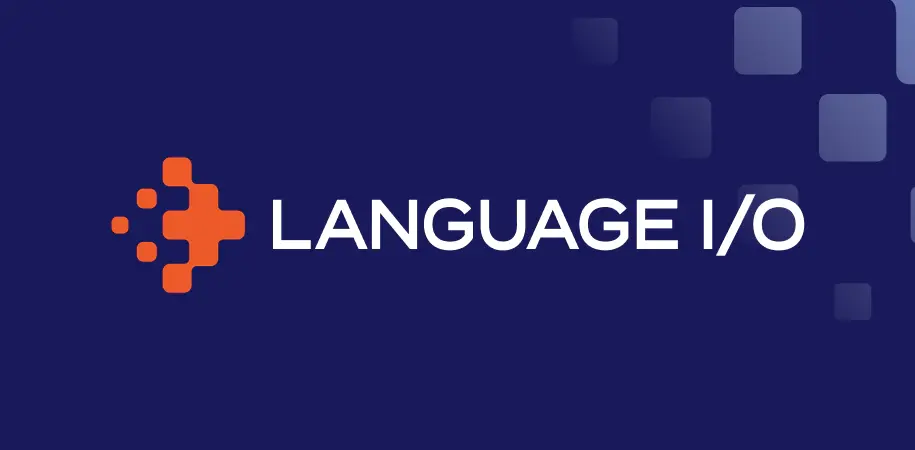
Are you a digital marketing professional and tasked with helping expand your business to international markets? If so, I invite you to watch the 30-minute recording of the interview with Kaarina Kvaavik, chief business officer and co-founder of Language I/O.
As an international SEO expert, I regularly host online educational events that help companies implement local, national, and global expansion strategies. In October of 2020, I co-moderated an online panel discussion that also featured Language I/O CEO Heather Shoemaker. This web panel was entitled “New(ish) Applications of Artificial Intelligence (AI) in Content Creation and Localization” and I was blown away by the information that Heather shared, so I decided to dig a bit deeper. I ultimately ended up connecting with Kaarina for this insightful follow-up interview. Throughout this 30-minute interview, I was able to ask Kaarina a series of six questions regarding advice in the translation, localization, and digital marketing world.
You’ll find the questions and a summary of Kaarina’s answers below. Still, I certainly hope that you’ll find the time to view the 30-minute recording of our interview:
1. Why do marketers need to care about translation and customer support?
Kaarina noted that a marketer’s main job is to create brand recognition and enthusiasm around the brand. At first, customer support had negative connotations around itself. However, over the past five years, people are beginning to see that customer support can create real revenue for their company. She mentioned a critical insight, “People buy what they can read.” Ultimately the customer’s experience is going to be coming from the support side of an organization which is significant to remember, and if you are not communicating with your customer in the language they speak, you are gaining a bad reputation for your business.
2. Why is it especially dangerous to get marketing translations wrong?
When we think about marketing and translations, we need to remember that it is a big part of branding. Kaarina referred to the habit of people using machine translation to translate marketing content. Machine translation can be problematic because it does not pay close attention to the necessary details when you are trying to introduce something new to the market. She spoke briefly about the importance of looking at the culture and using transcreation to adapt your message to a particular locale. You must always check your messages and see what they mean.
3. How can poor translations negatively impact a company’s bottom line?
I took the lead on this question with a personal example of when I hosted a webinar with a massive software company. I learned that this company used machine translation for their help system. Thus, the translation quality was relatively low, and the machine-translated content was not correctly optimized for Google search. International SEO is crucial as it will help reduce the call volume to a company’s call center. If people find the information they are looking for via a Google search, they are less likely to pick up the phone. Nowadays, the average cost for a customer service phone call per minute is around $2.00. Kaarina was not shocked at this price at all. She advises companies to spend their time and money making sure everything is translated correctly and optimized for search engines.
4. What are some pitfalls to look out for when looking for a software company that provides translation solutions?
Kvaavik brought up that translation quality is a significant component when it comes to looking for hidden danger. The goal should be to create the type of quality that you want each time. She touched on the importance of partnership and how it can benefit a brand to partner with a provider to produce the positive experience you want your customer to have. Kaarina noted, “Be ethical and transparent. You must be transparent around pricing and make sure there are no surprises.”
5. How has user-generated content (UGC) played a role in marketing recently, and what localization challenges come with UGC?
UGC refers to any content that an individual has voluntarily created and shared information about the company. However, they do not need to work or have worked for this company. UGC can be something as simple as a social media post or a third-party website. According to Kvaavik, “55% of consumers trust UGC content more than any other forms of marketing. UGC videos on YouTube receive ten times more views than any content that is created and uploaded on a brand.” This number is only becoming higher as technology, and more social media platforms develop. Language I/O can handle UGC content by using machine translation with their technology layered into the process. UGC is key to success for a brand, and if a company lacks attention to this content, it can have a negative impact on profit and growth.
6. How have marketing teams succeeded with Language I/O?
Language I/O is founded upon the notion that “The future of translations is conversational.” They work with brands that are both global or in need to be global. This company understands consumers’ wants and needs and how important it is to provide information and content in local languages. They strive every day to make the conversation with the consumer understandable and efficient. Kvaavik concluded, “If you’re a marketer you need to look at UGC and where it is going. Understand the importance of your customer support team and brand so that they truly get the recognition that they should have.”
About the author: Chris Raulf is the founder of Boulder SEO Marketing, a full-service digital marketing agency. Raulf’s international and multilingual background have helped him become a globally recognized SEO expert. Raulf and his teamwork with local, national and international businesses. They help them implement search engine optimization and digital marketing strategies that significantly boost lead generation and sales.




